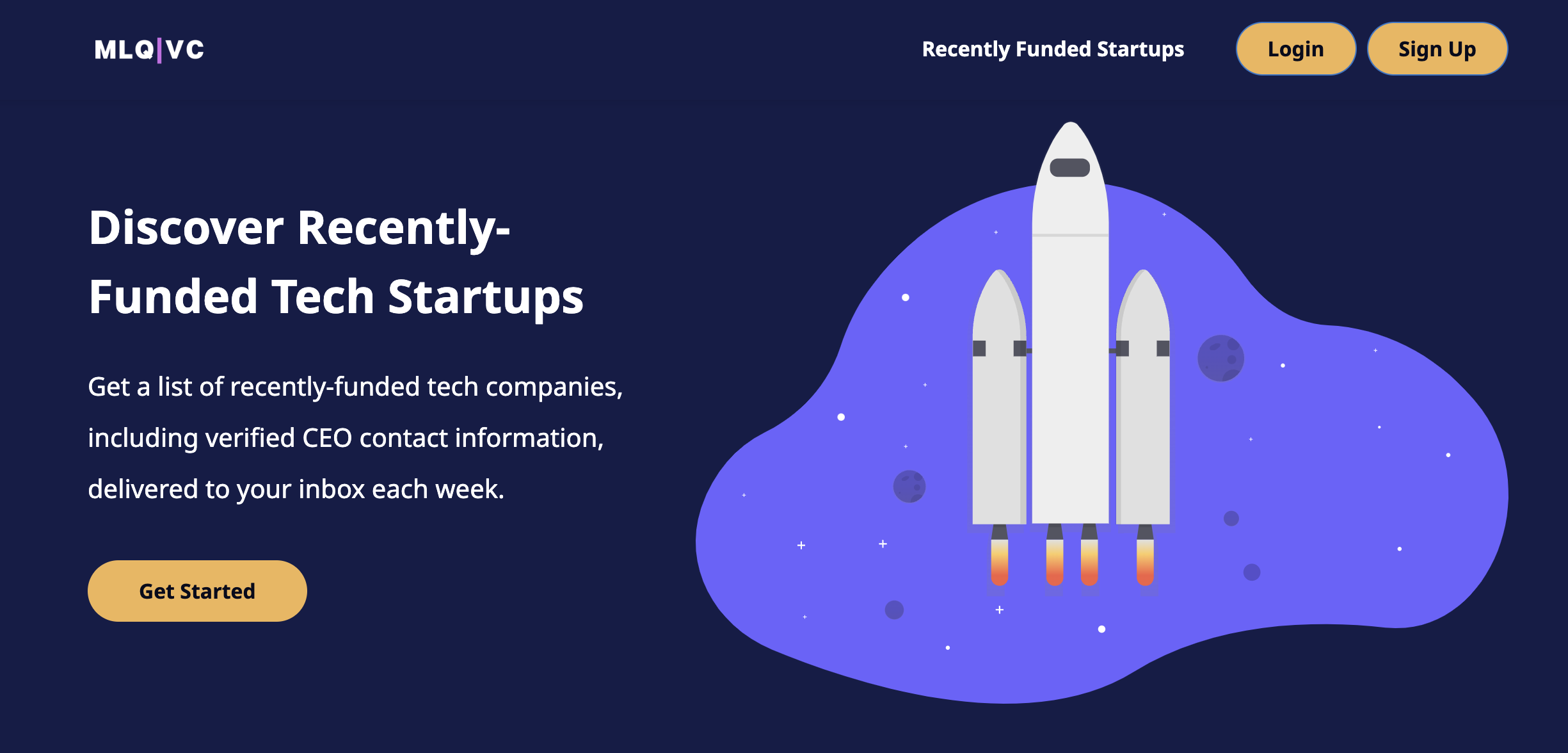Welcome to our This Week in VC roundup - this week we have stories about data-driven processes for augmented venture capital & how to raise venture capital funding for your startup.
🚀 Who Got Funded?
Here are a few of our favorite startups that successfully raised VC funding this week:
Quix - Raised $13M Series A
- What they do: Quix is a platform for in-memory data stream processing used by data scientists, engineers, and developers to create real-time data-driven applications.
- Industries: Cloud Computing, Analytics, Cloud Infrastructure, Cloud Data Services, Information Technology
- Location: London, England
Zenlytic - Raised $5.4M Seed
- What they do: Zenlytic is a no-code tool that enables clients to get a complete picture of their business by automatically surfacing significant changes in the data, presenting it in a useful way, and drilling into the root causes that drive the metrics.
- Industries: E-Commerce, Analytics, Software
- Location: New York, United States
Check out MLQ VC: Discover Recently-Funded Startups to get access to all 100+ venture funding deals this week as well as our database of 7000+ VC-funded startups.

Stay up to date with AI
💎 Top Stories
Here are a few of the top stories in startups and venture capital this week:
Processes for augmented venture capital
- In order to find new, promising investment opportunities, VCs need effective and inclusive filters to cut through the noise.
- There are two major use cases that need to be considered for data presentation: exploration (finding new opportunities) and research (following up on previously identified opportunities).
- A hybrid screening setup that combines static, deterministic filters (what the investors look at) with dynamic, ML-based filters (what the data tells us) is the most effective way to screen for new opportunities.
- Static, deterministic screening has the benefits of being able to incorporate an investor's own preferences, being more inclusive, and being more adaptable to changing requirements.
- Dynamic, ML-based screening has the benefits of removing human bias, being more scalable, and being able to more effectively identify patterns.
- The best way to marry data-driven sourcing and screening approaches with traditional VC processes is to use an auto-tagging algorithm to automatically create industry, technology, and business model tags based on company descriptions.
Read the full story:

How to raise venture capital funding
- Applying for venture capital is an excellent choice for most early-stage startups because the venture capitalists take on the majority of the risk.
- However, getting VC funding isn’t as easy as it sounds. There are thousands of startups out there competing for venture capital in an increasingly oversaturated market.
- The amount of venture capital funding investors will potentially give you, and your business is directly tied to your startup’s current valuation.
- In order to improve your chances of receiving VC funding, it’s important to determine your business valuation and how much capital you need to raise.
- Once you have this information, you can start looking for venture capitalists to seek funding from.
- There are roughly 1,000 venture capital firms in the US alone, so you must narrow your options before applying left and right.
- Important factors to consider when coming up with a list of potential venture capitalists include your startup’s current investment stage and funding history, location, and industry.
- Once you identify VCs that look like a good option to contact, make a prioritized list based on how likely you think they might be to give you venture capital.
- It’s possible (very likely, even) that you’ll end up contacting all of them anyway, but it’s best to work your way down the list, starting with the VCs that seem like the best fit for your startup’s business stage, location, and industry.
Read the full story:

That's it for this edition of This Week in VC, if you were forwarded this newsletter and would like to receive it you can sign up here.








